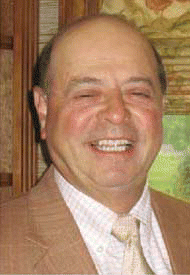Chronic rhinosinusitis (CRS) is defined as inflammatory disease of the sinuses that lasts for more than eight weeks; however, a specific etiology of this complex condition remains largely unknown. Fungus, biofilms, and superantigens, whether alone or in combination, are some of the many potential causes being explored, say experts. Other causes may include allergens, viruses, or genetic factors.
Explore This Issue
September 2006The disease is multifactorial and feeds into a common pathway that is not static and creates varying amounts of symptoms, said James Palmer, MD, Assistant Professor in the Division of Rhinology and Department of Otorhinolaryngology/Head and Neck Surgery at the University of Pennsylvania.
Theories surrounding the causes of CRS, whether airborne fungi, biofilms, or superantigens, all have their merits and downfalls, and researchers don’t know if any of these actually cause the condition, added Dr. Palmer. They are all threads of truth in a big tapestry picture of the disease, he said.
No research exists that allows investigators to completely exclude the idea that multiple factors contribute to the development of CRS, said Jens U. Ponikau, MD, Clinical Assistant Professor of Otolaryngology at the School of Medicine and Biomedical Sciences, University at Buffalo, The State University of New York (SUNY).
As scientists continue to develop a better understanding of CRS, they hope their research will one day affect treatment for the roughly 32 million cases of the condition reported to the Centers for Disease Control and Prevention annually.
Complexities of Chronic Inflammation
By definition, CRS is a disease of inflammation; however, inflammation is an extremely complex process, which makes determining disease etiology difficult, said Joel M. Bernstein, MD, PhD, Clinical Professor of Otolaryngology and Pediatrics at the School of Medicine and Biomedical Sciences at the University at Buffalo, SUNY.
Patients with CRS experience an infiltration of persistent inflammatory cells, which can include eosinophils, lymphocytes, mast cells, macrophages and fibroblasts, explained Dr. Bernstein. These cells produce inflammatory mediators in the sinuses leading to disease symptoms.
Researchers are trying to understand what factors feed this chronic inflammation, said Dr. Bernstein. Most people get an infection, which the immune response gets rid of, and then they get better, he said. But in patients with CRS, there’s obviously some sort of ongoing stimulus.
The patient’s immune system tries to fight off foreign offenders, whether fungi, allergens, or superantigens, and then remission occurs, he explained. However, these offenders are not completely eliminated, and consequently, the immune response starts all over again. The nose is not sterile, he said. There are always some bacterial or fungal factors, or toxins released by bacteria to keep the inflammation going.

Leave a Reply